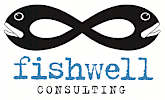
The world’s sharks are facing an unprecedented crisis. Long-term overfishing, illegal trade, poor fisheries management, and international inaction means 37% of the world’s shark and ray species are now threatened with extinction
Back in 1996, TRAFFIC produced the first comprehensive global review of trade in sharks and rays which revealed the lack of management and monitoring of the fisheries and trade in their products.
This was the start of over two decades of TRAFFIC reviews recommending the urgent need for traceability and strengthened regulations to turn the tide in their favour. Today, the crisis facing sharks has reached breaking point, as each IUCN Red List™ assessment reveals more and more are facing extinction.
SharkTrace: An emerging solution
A lack of sustainable fisheries management, accurate monitoring systems, and attention to compliance with regulations, are some of the drivers pushing sharks and rays to the brink.
Transparency of which species are being caught and traded is a vital first step in interpreting how things currently stand. Species identification tools would:
- support enforcement to intercept illegal catch AND
- contribute to existing fisheries management measures
Traceability, or “Chain of custody”, systems are a real and available technological solution that would fill these gaps, and act as a crucial step to combat the current over-exploitation of sharks.
This would not only give consumers confidence that what they buy has come from a legal, well-managed source, but provide essential protections to species already threatened by trade.
This is where SharkTrace comes in.
there is currently no trade-based mechanism
designed to identify shark products derived from legal sources, whether they are species of conservation concern, or whether they are caught within well-managed fisheries

Responsibility for ensuring shark and ray products are from sustainable and legal sources is the responsibility of catchers, managers, traders and consumers. SharkTrace enables us to support those responsible actions
Glenn Sant, Senior Advisor – Fisheries trade
SHARKTRACE IN ACTION
We’ve proven that SharkTrace works.
Despite the COVID pandemic, we’ve successfully trialled SharkTrace in a busy Australian fishery — onboard fishing vessels, and at shark meat processing plants. Here's how it works.
1. SharkTrace begins at sea. The initial data capture happens when a shark is caught.
The “Onboard” App uses vessel-based electronic logbook and GPS technology to tag the exact location of where the shark was caught, the fishing gear used, the species name, the time and date of capture, and who caught it.
An artisanal fishing crew prepares for a day's work. Photo: Longshot Productions / TRAFFIC
i
2. Offloading. The next data-capture point is at ports, when sharks are offloaded from the vessel
Here, whole or partially processed sharks are either tagged individually or in heavyweight containers using Radio-Frequency Identification (RFID) tags. These are then scanned before transport.
Caught Gummy Sharks being processed at Pitliangas Food Group, the biggest shark processor in Australia
i
3. Transporting. The tagged containers are transported for commercial processing.
The sharks are tracked in transit using the “In-transit” App until they arrive for processing. The batch, weight, customer, logistics company, and dates are all logged throughout.
Tagged sharks and shark products are prepare for transport.
i
4. Splitting, processing, and mixing. The tagged containers are transported for commercial processing.
Once the shark products arrive at a processing plant, all information about the species caught and the location and vessel that caught it can be retrieved from the RFID tags.
SharkTrace captures this information about these critical points in a supply chain and links it with official validation documents. These are essential requirements to demonstrate a product is sustainable and legal when partnered with a sustainable fishery.
Caught Gummy Sharks being processed at Pitliangas Food Group, the biggest shark processor in Australia
i
NEXT STEPS ...
While we’re confident SharkTrace will work to protect sharks, to ensure the integrity of SharkTrace as a system that works in reality, we are:
Commencing further at-sea trials
Extending our trials across Asia and Africa
Applying the same concept across a range of fishery types
Engaging with industry to trial and adopt the system
Working with governments to adopt SharkTrace to assist their management of shark and ray fisheries and trade.
Find out more about our approach to sustainable fisheries on our perspectives page.




To support the transparency of the provenance of shark products, the Shark Conservation Foundation funded a joint project with TRAFFIC, Fishwell Consulting, and OLSPS to develop “SharkTrace” software and procedures to trace shark products from the fishing vessel through processing and wholesale distribution supply chain. OLSPS designed the software platform to capture this. SharkTrace enables the recording and viewing of all relevant shark product information, from the point of capture through the supply chain. It utilises proven hardware and software technologies, which include tamperproof RFID and QR tags and data validation systems.

